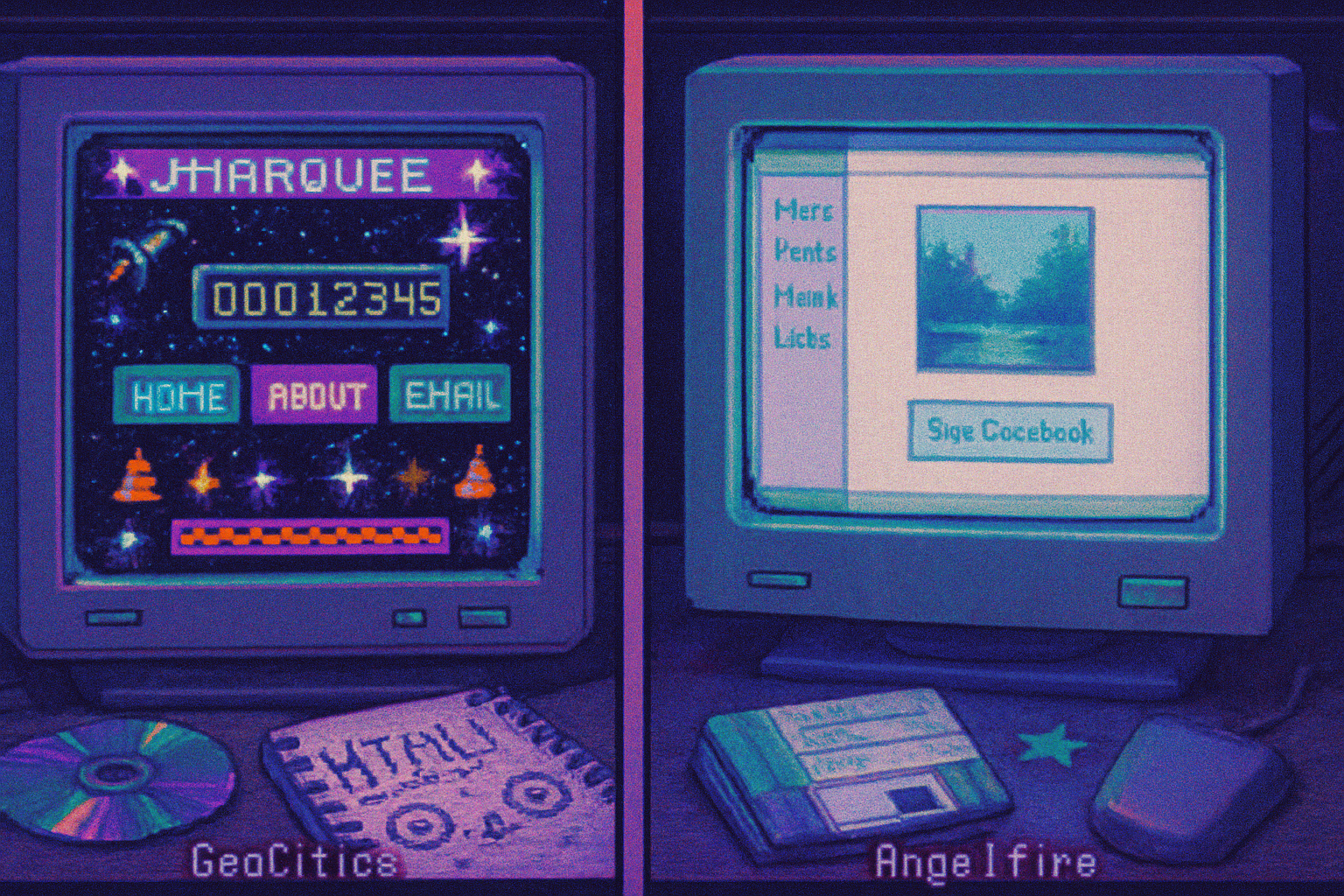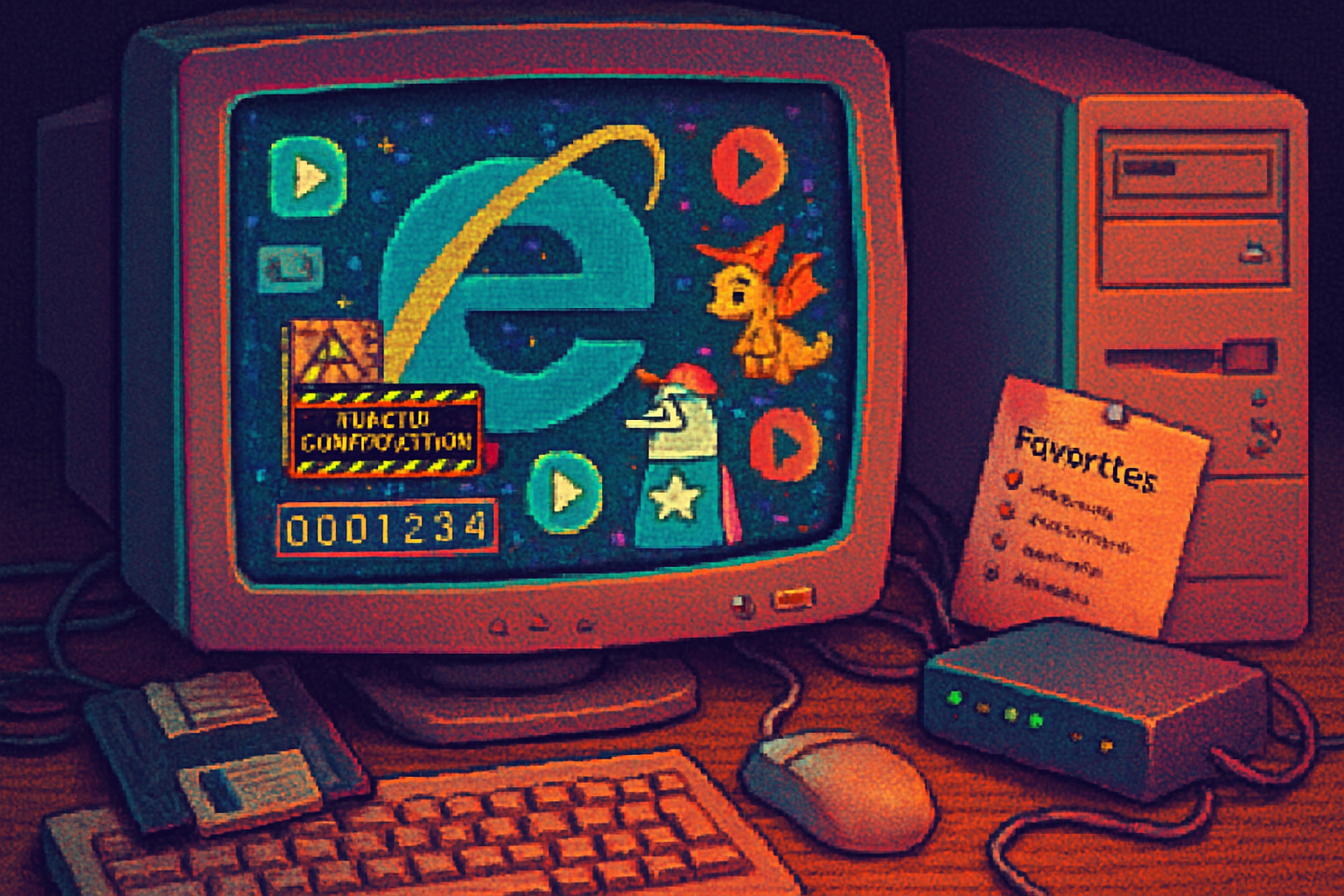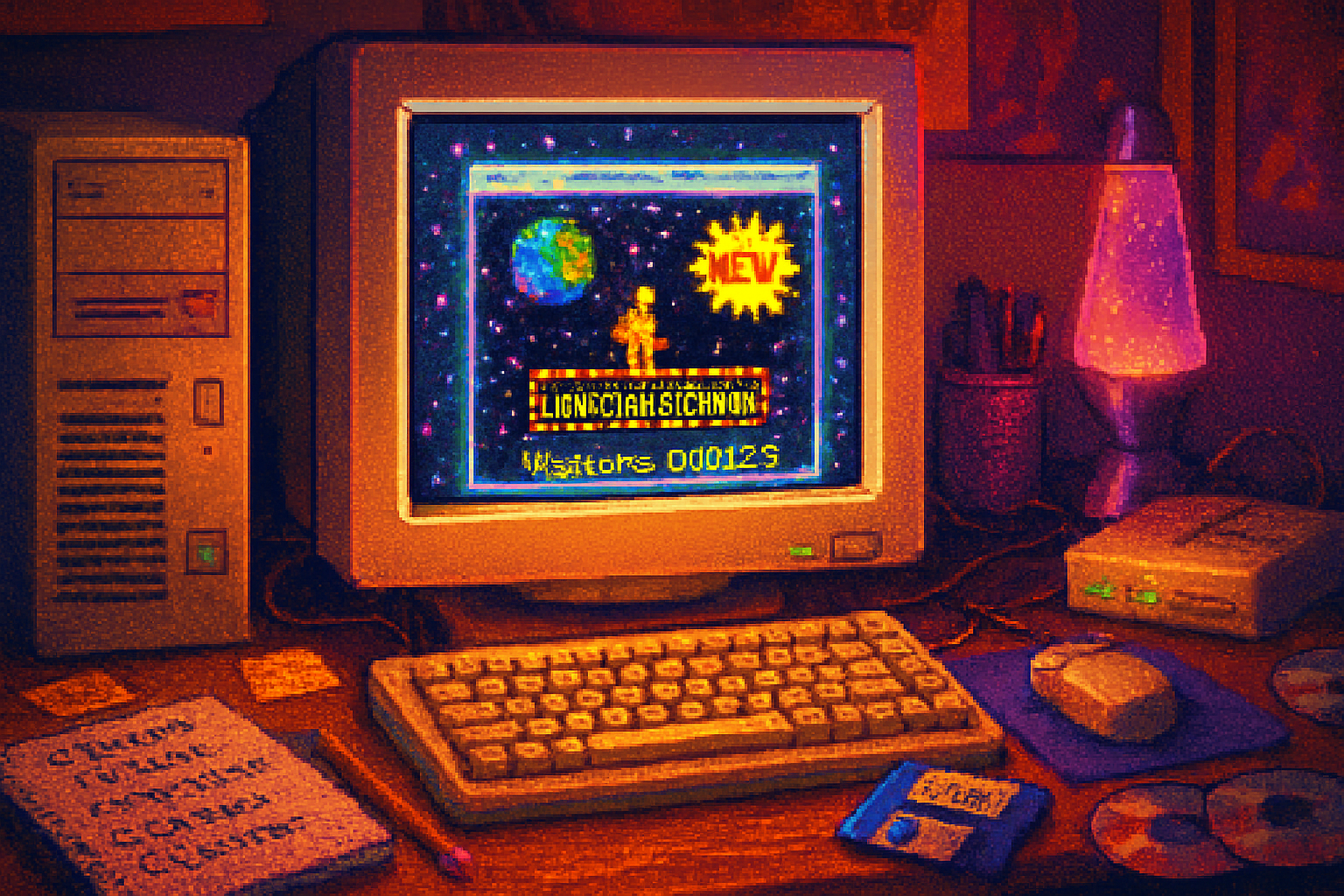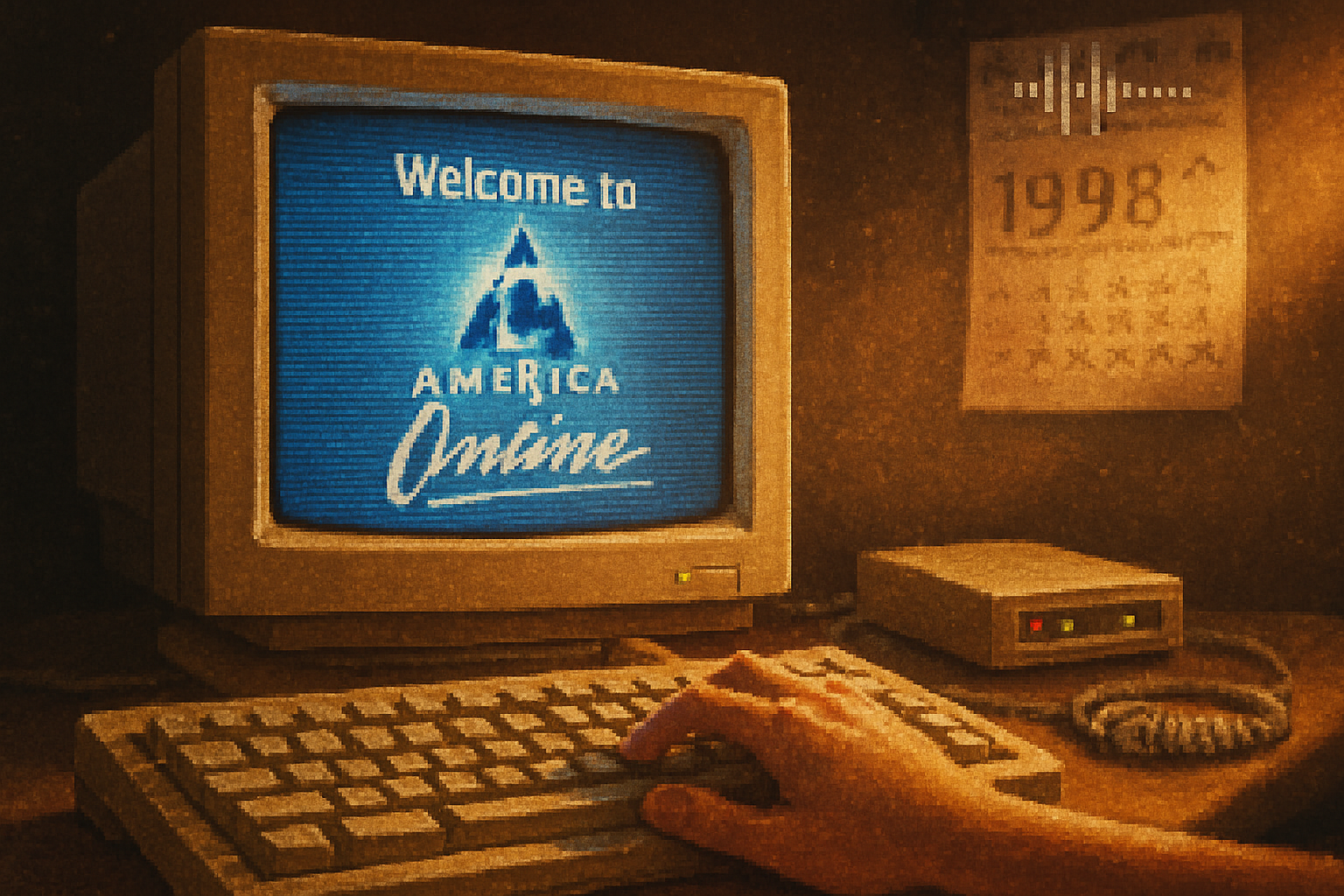· retrotech · 6 min read
The Digital Time Capsule: How GeoCities Shaped Early Online Identity
GeoCities gave millions a blank page and a neighborhood map - the result was an era of wildly personal sites, grassroots communities and a DIY aesthetic that still echoes in today's social media. This post explores how GeoCities enabled identity-building online, the cultural practices it spawned, and what modern platforms can learn from that patchwork web.
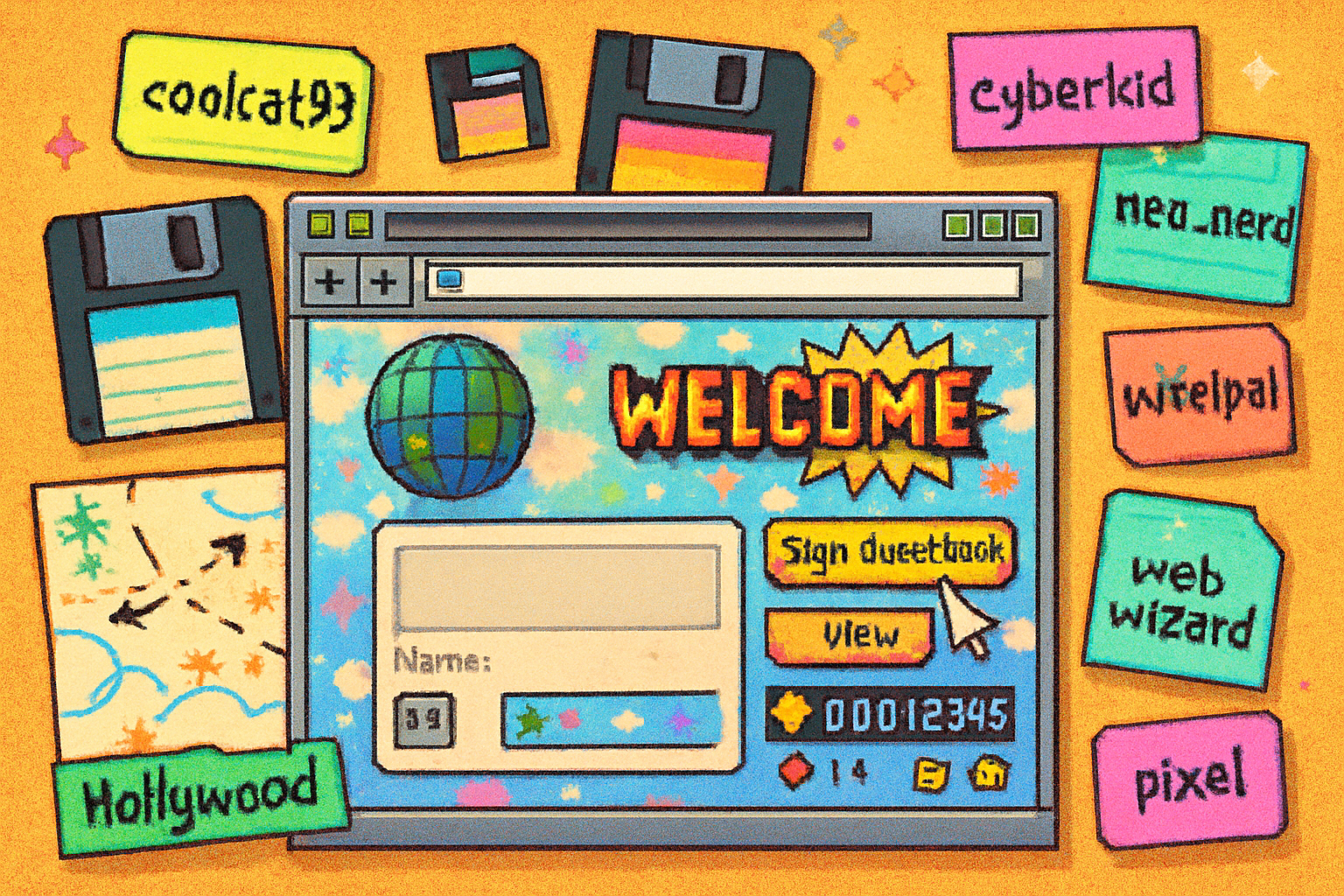
Introduction
In the 1990s, the web felt less like a handful of apps and more like a patchwork of rooms in a sprawling, chaotic house. GeoCities was one of the biggest street maps of that house - a free hosting service that gave users a directory-style neighborhood and a handful of web pages to decorate. For many early web users, GeoCities was the first place they could build a public self on the internet.
This post digs into how GeoCities made personal expression and community possible, the distinctive aesthetics and social practices it produced, and what those experiments in identity can teach us about today’s social media environment.
A brief history (the milestones)
- GeoCities launched in 1994 as Beverly Hills Internet (later renamed) and quickly grew into one of the web’s most popular hosting services.
- Yahoo! acquired GeoCities in 1999 for several billion dollars, cementing it as a major portal property during the dot-com boom.1
- In 2009 Yahoo! shut down its U.S. GeoCities sites; by then countless personal pages, subcultures and local community sites had either been lost or rescued by archivists.12
How GeoCities structured identity: neighborhoods and home pages
One of GeoCities’ most influential design decisions was its “neighborhood” system. Instead of presenting pages as undifferentiated URLs, GeoCities grouped pages into themed areas - think “Hollywood,” “SiliconValley,” “Athens,” and “Heartland.” This gave people a contextual label for their pages: you weren’t just a person with a page, you were a member of a neighborhood with a certain flavor.
That neighborhood framing encouraged two things:
- Affinity-based belonging. People sought out neighborhoods that matched their interests or aspirations (fans of music, local communities, hobbyists), which made it easier to find like-minded sites.
- Playful identity signaling. With a neighborhood tag as a headline, individuals could signal interests and identity quickly.
At a technical and cultural level, a GeoCities “home page” was a tiny personal broadcast station: a few static HTML pages, a guestbook, images, links to favorite sites and an emphasis on personality rather than perfect design.
The DIY aesthetic: constraints as creativity catalysts
GeoCities users were often novices who learned HTML by doing. The limited tools, simple hosting and the need to hand-assemble pages produced a distinctive visual language:
- Animated GIFs, neon backgrounds, tiled images and MIDI background music.
- Animated “blinkies,” visitor counters, and marquee tags that made pages feel alive.
- Frames, tables and GIF-based navigation buttons that shaped an unmistakable layout style.
Those constraints produced experimentation. People hacked together photo galleries, embedded playlists, designed fan-pages, and crafted elaborate link-lists (including the famous “Webring” links and top-10 lists) to connect with others.
Social rituals: guestbooks, shout-outs and link culture
Before comments sections and follower counts, GeoCities had guestbooks: a lightweight, public way for visitors to leave a note. Guestbooks served as social proof, conversation starters and small reputational systems. Other social practices included:
- Link pages and link exchanges - users curated lists of favorite sites, creating webs of discovery.
- Guestbook-driven relationships - repeated entries often led to pen-pal-like friendships and later migration to instant messaging and forums.
- Webrings and neighborhood lists that connected micro-communities across domains.
These practices emphasized public interaction in a small-scale, human way - more like passing notes on a neighborhood bulletin board than shouting into a global feed.
GeoCities as cultural amplifier and incubator
GeoCities lowered the barrier to entry for publishing. That meant two important things:
- Voices that weren’t commercially viable had a space to exist. Hobbyists, niche fandoms, small community organizations and marginalized voices could make themselves visible.
- Diverse local and subcultural identities were documented visually and narratively in personal pages - an early ethnography of the web.
The sheer variety of pages - from teenage fan shrines to local political organizations to hobbyist tutorials - made GeoCities a cultural mirror of people learning to publish and self-represent.
The loss and the rescue: ephemeral web vs. preservation
When GeoCities was shut down, many pages vanished. The risk was not just technical (files deleted) but cultural - years of personal history, fandom, local activism and amateur creativity were threatened.
Archival efforts, especially by groups like Archive Team and the Internet Archive, rescued millions of pages and created searchable collections that give researchers and nostalgists access to these early expressions.23 Those rescue projects highlighted an important truth: the web is a cultural repository, and voluntary platform decisions can erase huge swaths of community memory.
What GeoCities taught us about online identity and social platforms
GeoCities wasn’t social media in the modern sense, but it set foundational practices and norms that echo today:
- Identity is performative and constructed. People curated how they were seen with images, biographies, favorite links and neighborhood labels - much like today’s profiles.
- Small-scale public spaces matter. GeoCities’ neighborhood model fostered discoverability and belonging without algorithmic centralization.
- Aesthetic fluency is empowering. Learning HTML and visual composition meant users could shape their presentation - a kind of digital literacy that fostered agency.
- Ownership and permanence matter. Centralized platforms can delete history; developers and communities should consider portability and preservation.
Comparing GeoCities and modern social platforms
Similarities:
- Both enable identity expression and community formation.
- Both create norms and vocabularies (memes, icons, profile structures) that users adopt and adapt.
Differences:
- Control - GeoCities pages were files users controlled more directly (within hosting limits). Modern platforms centralize control, terms and distribution.
- Design freedom - GeoCities allowed almost unlimited page customization; modern profile templates are more constrained but easier for novices.
- Discoverability - GeoCities used neighborhood maps and link networks; today algorithms and follow graphs dominate discovery.
Lessons for designers and platform builders
- Prioritize user agency. Let people own or export their data and presentation where possible.
- Design for small publics. Tools that encourage local communities and discoverable neighborhoods reduce the need for monetized virality.
- Preserve cultural artifacts proactively. Platforms should build export and archival hooks so ephemeral creativity isn’t lost overnight.
- Teach creative tooling. Lowering the barrier to publish and tinker produces more diverse creators and richer culture.
Closing: a patchwork legacy
GeoCities was messy, loud and often tacky by later design standards - and that’s part of why it mattered. It gave millions permission to try making themselves public, to play with identity, to join a neighborhood and to learn by building. The personal web created there was a digital time capsule of the era’s aspirations, anxieties and humor.
When we think about building healthier, more resilient social systems today, revisiting GeoCities reminds us that community, affordances for creative ownership, and the preservation of ordinary voices are essential. Those are the parts of the web worth saving.
Further reading and archives
- GeoCities (Wikipedia): https://en.wikipedia.org/wiki/GeoCities
- Internet Archive - GeoCities collections and captures:
- Archive Team - GeoCities project and rescue efforts:
Footnotes
For acquisition, timeline and shutdown details see the GeoCities entry on Wikipedia. ↩ ↩2
Archive Team and the Internet Archive led large-scale capture efforts; their pages document the rescue and preservation. ↩ ↩2
The Internet Archive hosts a large portion of rescued GeoCities content and makes it searchable for research and nostalgia. ↩
